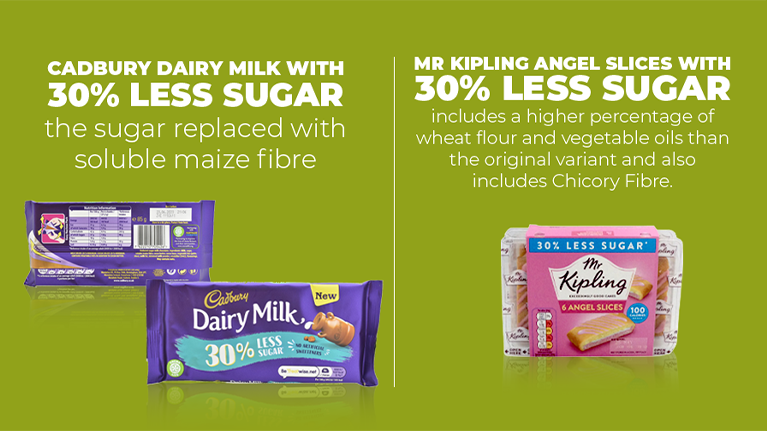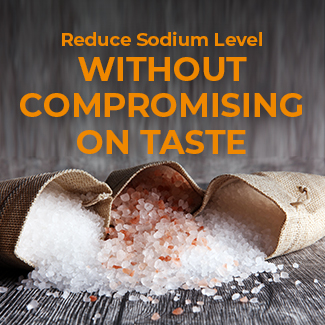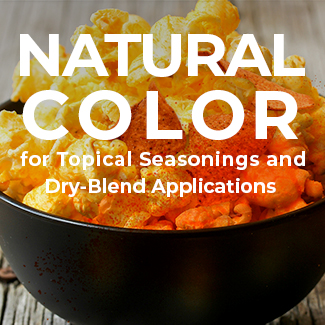Simple, Satisfying and Oh, Not So Sweet!
With the increased awareness of health issues associated with high sugar intake, consumers are looking to reduce sugar intake but don’t want to compromise taste.
Further, to try and curb the growth of diabetes and obesity, the South African government have been trying to enforce sugar-reduction goals by imposing sugar taxes as a way of helping their citizens control sugar intake. These taxes have forced consumers to rethink sugar in their food and drink by directly impacting their wallets.
Even though consumers know that sugar-reduction is important, urbanized, busy consumers will continue to enjoy sweet food/drink products, making them reluctant to shed their sweet tooth entirely. And where consumers are not prepared to back down lies the opportunity for food and beverage producers to step up and fill the gap while offering products consumers love and not compromising on the eating experience they have come to enjoy from your brand.
To not estrange your consumers with drastic sugar reduction in your products, there are a few subtle ways to implement sugar reduction strategies that meet the consumers’ need for reduced sugar products without compromising on the overall taste experience.
Strategy 1: Replacing sugar with natural and synthetic sweeteners
One of the most common solutions to sugar reduction is replacing sugar with plant-based sweeteners like stevia and sugar alcohols like Xylitol and Maltitol. Mintel GNPD data indicates a significant uptick in using these sweeteners in various categories, including chocolate confectionery, bakery, dessert and ice cream launches globally. This shows that this is an overall strategy employed by producers.
It is evident that natural & artificial sweeteners are gaining in popularity not only in classic “sugar-free’ categories like beverages, but also in categories like bakery, confectionery and ice-cream – so much so that chocolate confectionery, bakery, dessert and ice cream launches with a ‘sugar’ claim that also contained stevia grew from 17% 2015, to 28% in 2019.

*Indulgence categories include: bakery, desserts and ice cream, chocolate confectionery- Source: Mintel GNPD
However, substitutes like stevia bring unpleasant tastes along in strong, bitter, and metallic notes. While most masking agents can compensate, they cannot do it in the all-natural way demanded by consumers. Sensient SMOOTHENOL® is a technology developed to mask the off-notes of sweeteners that work to combat astringency, bitterness, metallic off-notes, and palate burn and is applicable in a wide range of food and beverage applications. Now manufacturers can meet consumers’ health profile desires while also giving them great-tasting food and beverages.
Strategy 2: Reducing the volume of physical sugar in the product
This strategy goes a long way to reduce the caloric value and risks of high sugar intake of foods and drinks. However, we risk alienating consumers who will quickly notice the change in the flavour and mouthfeel of the product. Innovations like Sensient’s All-Purpose Sweet Solutions™ offer innovators the opportunity to reduce physical volumes of sugar in food and drinks while not compromising on that sweet taste.
ALL PURPOSE SWEET SOLUTIONS™ – A locally made, natural sweetness enhancer that doesn’t compromise taste. This product offers Non-GMO, kosher, allergen-free options suitable for beverage, confectionery and dairy applications.
Strategy 3: Replacing Sugar with Fibre
Fibres like Polydextrose and Inulin, Malt Oligosaccharides, and Oligo-Fructose are high quality, suitable replacements for sugar. With consumers focusing on sugar-reduction and clean-labelled products, replacing sugar with fibre reduces sugar content and increases the focus on gut health, closely linked with overall mental and physical well-being. Some examples of this kind of sugar replacement can be seen here:
Strategy 4: Reducing the Need for Sugar by Enhancing Flavours, Aroma, and Colour
Science tells us that “taste” is a multi-sensory perception we construct from taste buds, visual appearance, and smell. The use of flavours, colours, and scents can be a promising option in reducing sugar content in food and drink products. A recent study revealed that an increase in vanilla and starch concentration in low-sugar edibles led to a rise in consumers’ vanilla flavour and sweetness perception. The enhanced flavour and aroma minimized the sensory changes caused when reducing the sugar.
The use of flavours can enhance the perception of sweetness in reduced-sugar products naturally. Sensient South Africa’s range of natural and synthetic sweet flavours can be paired with products to improve and build on a “sweet” profile with the added benefit of offering clean-label, kosher, halal, vegan and palm- and GMO-free solutions.

Along with flavour, colour has always had a substantial role in taste perception. Utilizing vibrant colours works hand in hand with those flavours to build a comprehensive or complex taste perception.

























